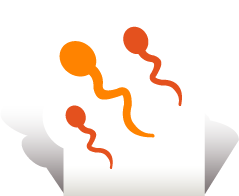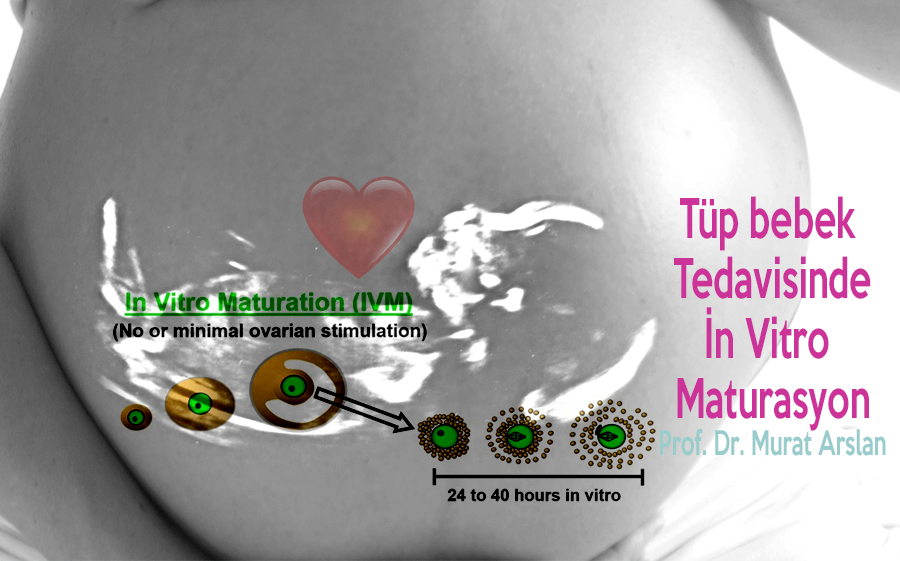IVM, in Vitro Maturation technique, is the removal of the egg cells from the body before they are fully matured and maturing in the laboratory.
Nowadays, in order to increase the chance of success of in vitro fertilization, it is aimed to obtain a large number of oocytes (eggs). Using controlled ovarian hyperstimulation (KOH) for this purpose, hormone preparations are normally used to develop 1 oocyte during each menstrual period. Clinically, serious problems such as accumulation of fluid in the abdomen and shortness of breath can be seen.
IVM (in vitro maturation) is the process of maturing in vitro after collection of immature oocytes (eggs) without drug injections.
With this method, depending on the use of hormone preparations
getting fat,
abdominal distension,
tension in the breasts,
irritability,
nausea,
vomiting
Undesirable side effects such as.
Since the cost of hormone preparations is not very high, treatment is cheaper.
The first pregnancy and live child born by IVF (IVM) procedure after IVM (in vitro maturation) application was in 1994. The most critical part of these studies is the formation of the factors that enable the maturation of oocytes in the body under laboratory conditions.

In routine in vitro fertilization, oocyte and sperm cells from patients are combined in culture fluids and embryos are grown in these fluids. Nowadays, the contents of the liquids used in routine in vitro fertilization applications have been improved, the number of quality embryos obtained in the laboratory has increased and thus the pregnancy rates can be brought to 50% on average. The development of microinjection techniques and the combination of genetic diagnostic methods with routine applications also play a role in this development.

It should be kept in mind that only mature oocytes collected from patients are used in routine IVF applications. Embryos obtained in this way have healthy embryo development than laboratory matured oocytes.
IVM (in vitro maturation) requires different protocols than routine in vitro fertilization. In order to ensure oocyte maturation in the laboratory, different culture fluids should be prepared from those used for embryo development.
The quality of the culture fluids used for embryo development is standardized, and the culture fluids to be used for IVM (in vitro maturation) are produced in laboratories where applications are made. As regards the content of culture fluids, studies are underway and no specific standards have yet been determined.
Another standard practice in IVF applications is oocyte collection. In IVM (in vitro maturation) applications, this process is performed during the period when the oocytes are not yet mature and requires special protocols and skills. This slow development in IVM (in vitro maturation) applications for 10 years has limited the use of clinical and technical standardization.
Due to the high drug prices used during IVF applications, IVM (in vitro maturation), which is made without medication and is sometimes referred to as “IVF without medication,, is financially attractive.
IVM (in vitro maturation) has now found its place in cynic use, particularly in patients at risk of overreacting hormone therapy, such as some PCOS group patients.
PCOS cases are among the first group of cases with the highest chance of conception in in vitro fertilization cases and the chance of conception as a result of routine in vitro fertilization is around 50% -60%. In IVM (in vitro maturation) applications, the chance of conception is limited to 20% worldwide. IVM (in vitro maturation) requires this treatment to be used only in patients who are overresponsive to drug therapy at the cost of halving the chances of success in the same group of patients.
IVM (in vitro maturation) applications have started to be implemented for the first time in 1997 in Turkey, in particular has been the focus of attention in the last 3 years and has obtained successful results in different centers in studies results in the treatment of appropriately selected patient group. IVM (in vitro maturation) after administration of the first baby was born in Turkey in 2000.
IVM (in vitro maturation) applications have not achieved the success rate of routine in vitro fertilization techniques. The development of the technique used in IVM (in vitro maturation) applications may be the beginning of a new advancement by standardizing the right patient groups to be selected.
IVM in Infertility Treatment (In-vitro Maturation)
One important innovation in recent years is IVM (in vitro maturation), which is the maturation of eggs outside the body.
The most important step of IVF treatment is the development of eggs in women. This treatment lasts up to 1 month. In addition, the development of the eggs is monitored by ultrasound and blood analysis every 2-3 days. None of this is required in the newly developed IVM. Here, the eggs that are present in the woman but not yet mature are collected and matured in the laboratories. These eggs are then fertilized and normal IVF procedure is performed.
This new method has several advantages. The most important is that women are not required to use medication and therefore are protected from all side effects. Another advantage is that the cost decreases both in terms of medicine and clinical aspects, and also the shortening of the treatment period and facilitating the patient. However, this method can only be used in polycystic ovary patients. There are some disadvantages of the new method, such that the desired quality of eggs is not always obtained or pregnancy rates are somewhat low are the first ones that come to mind.


Add Your Comment